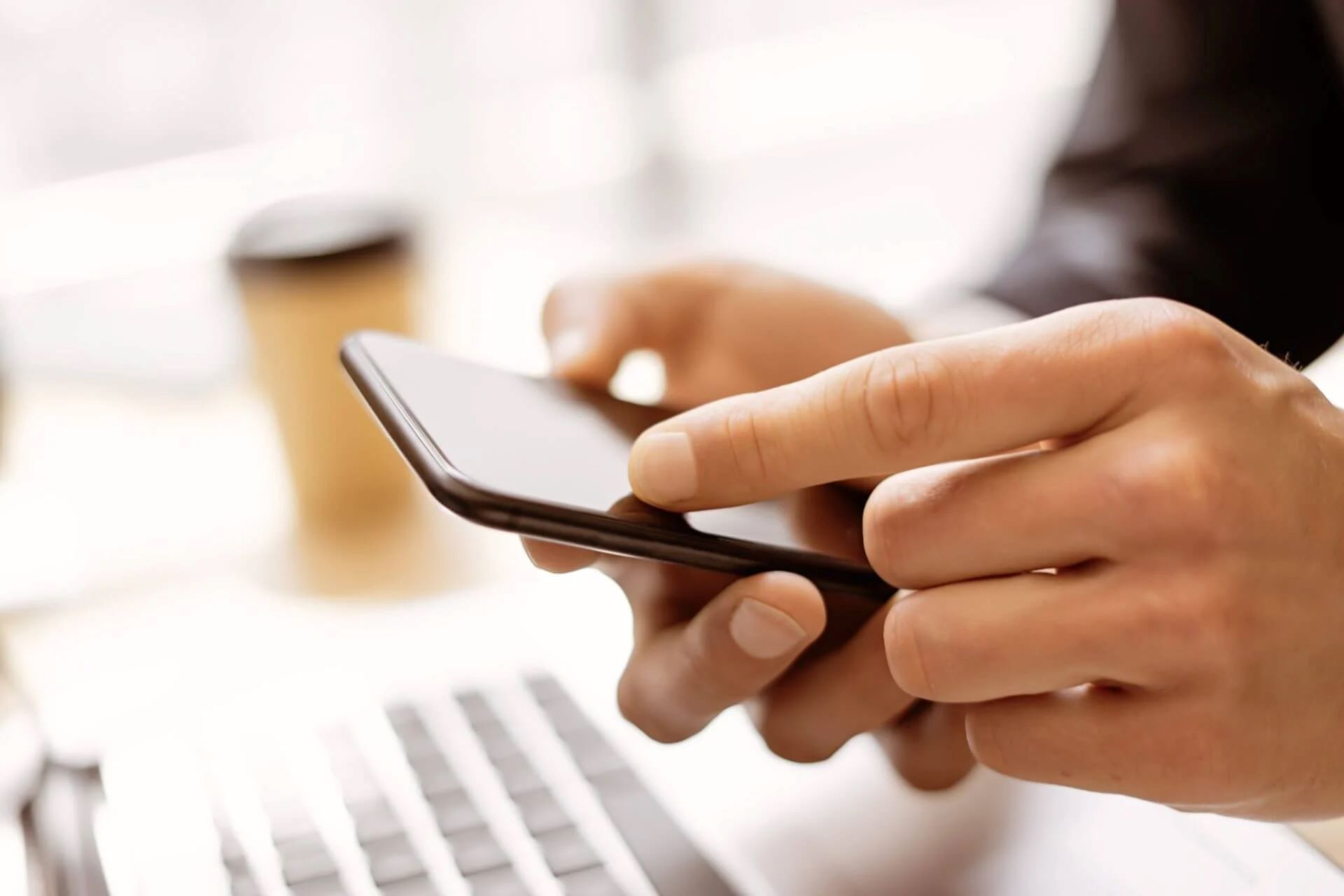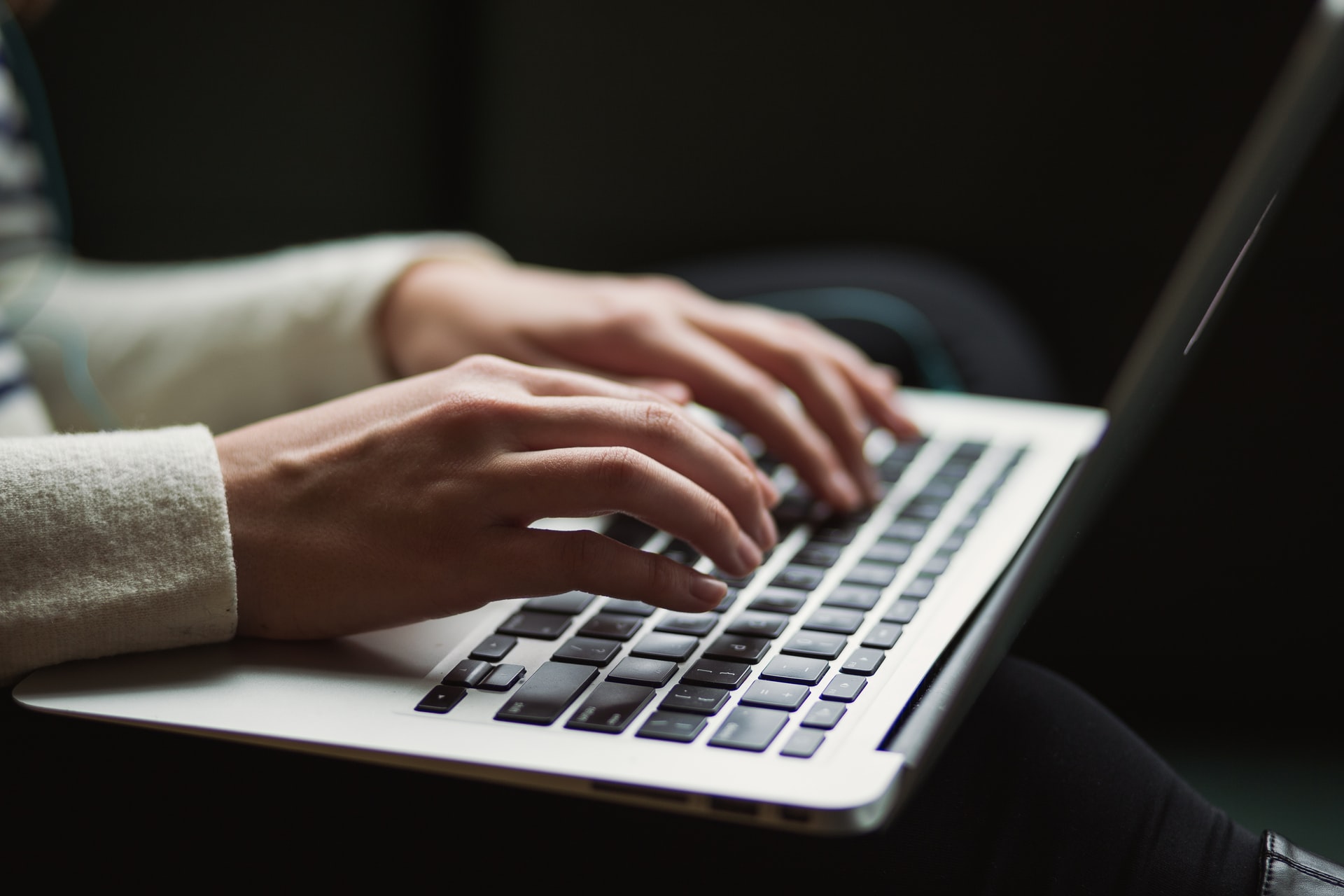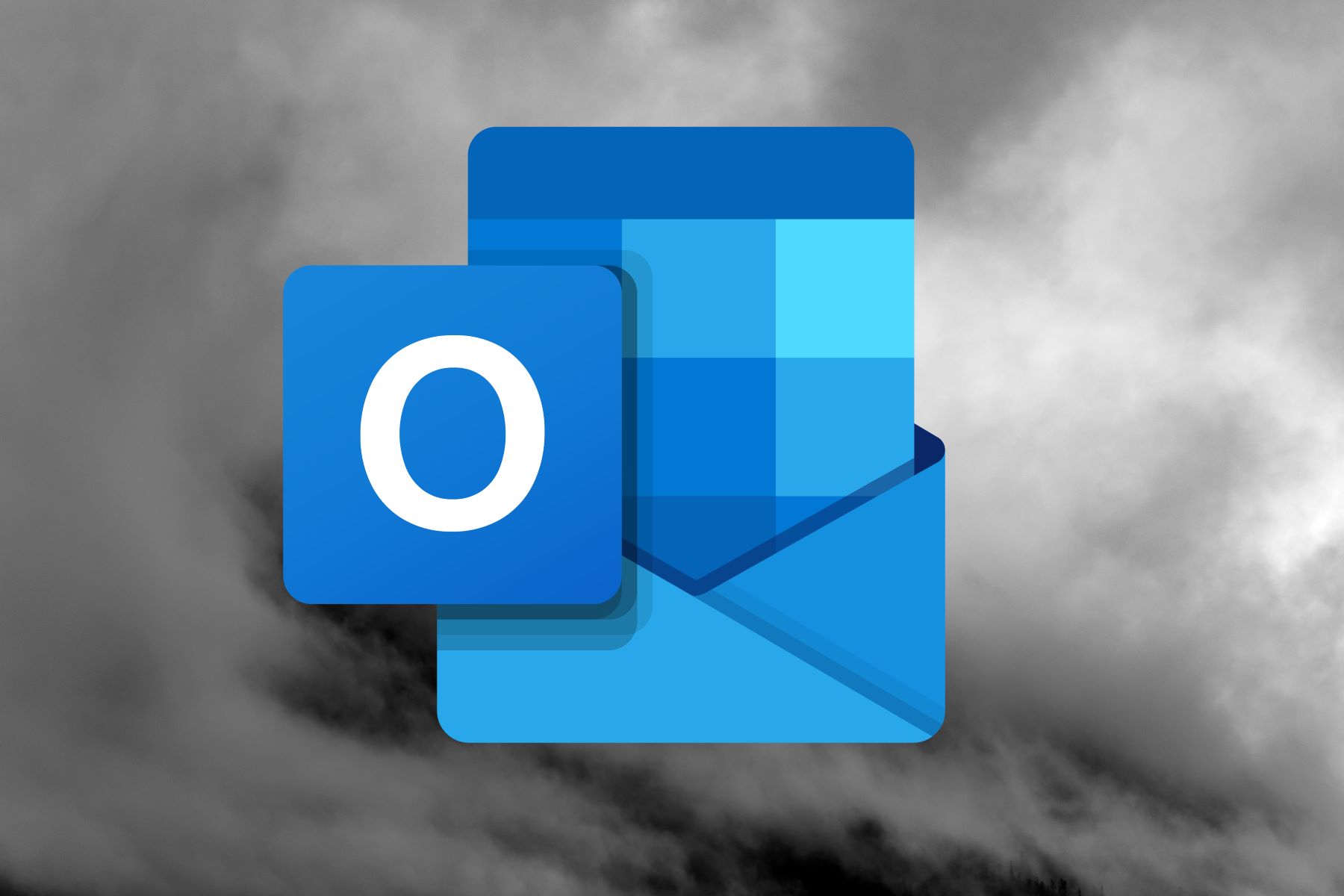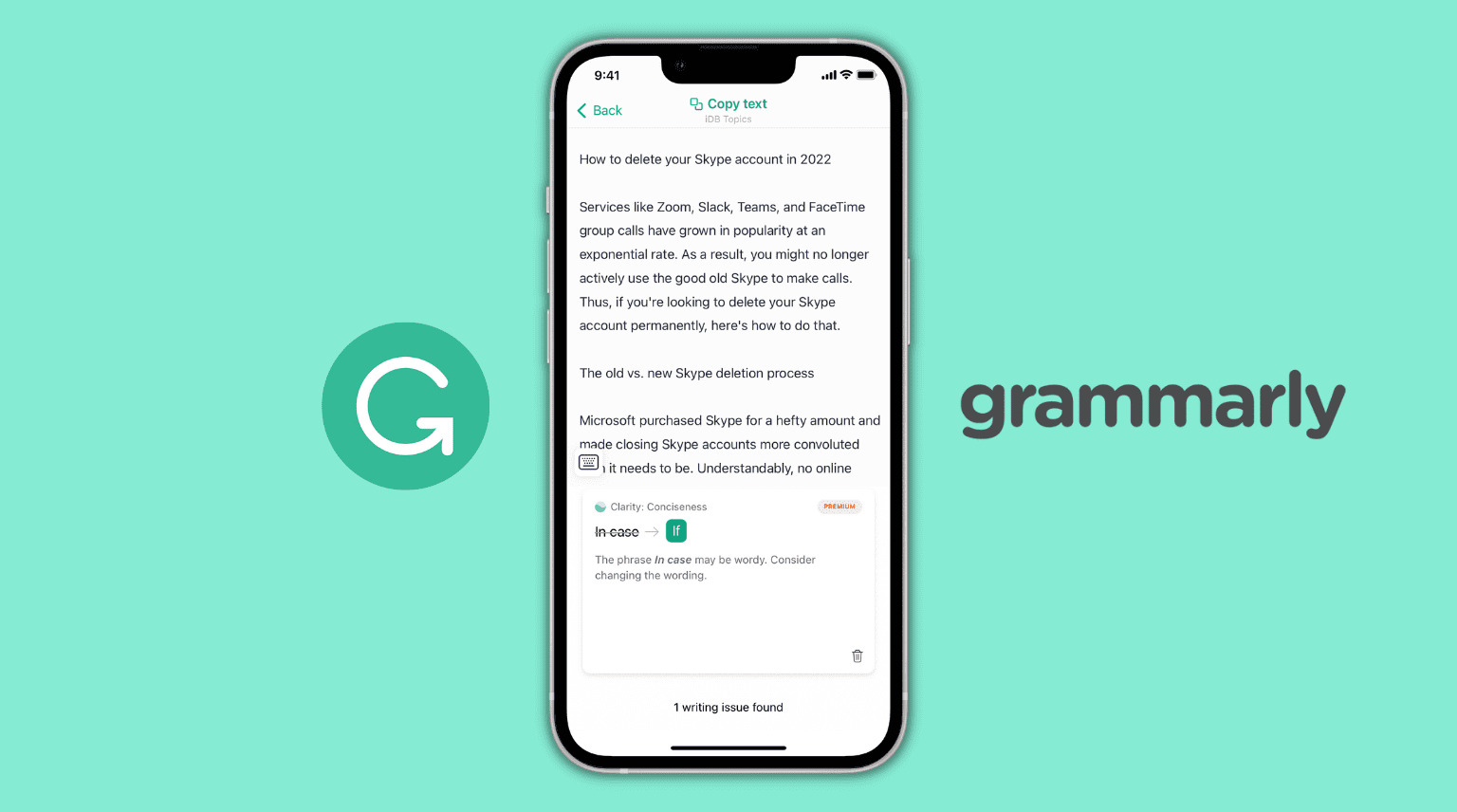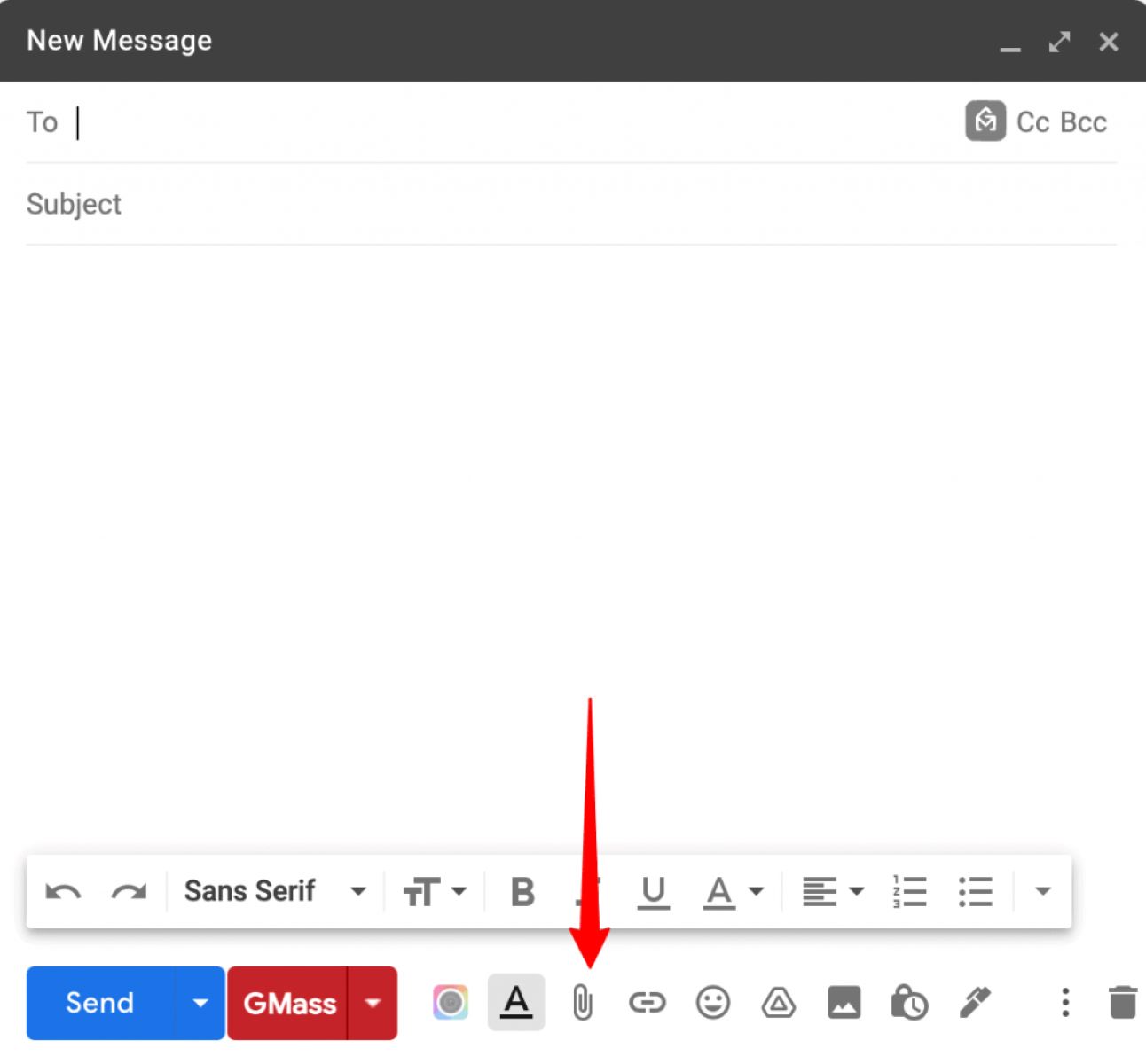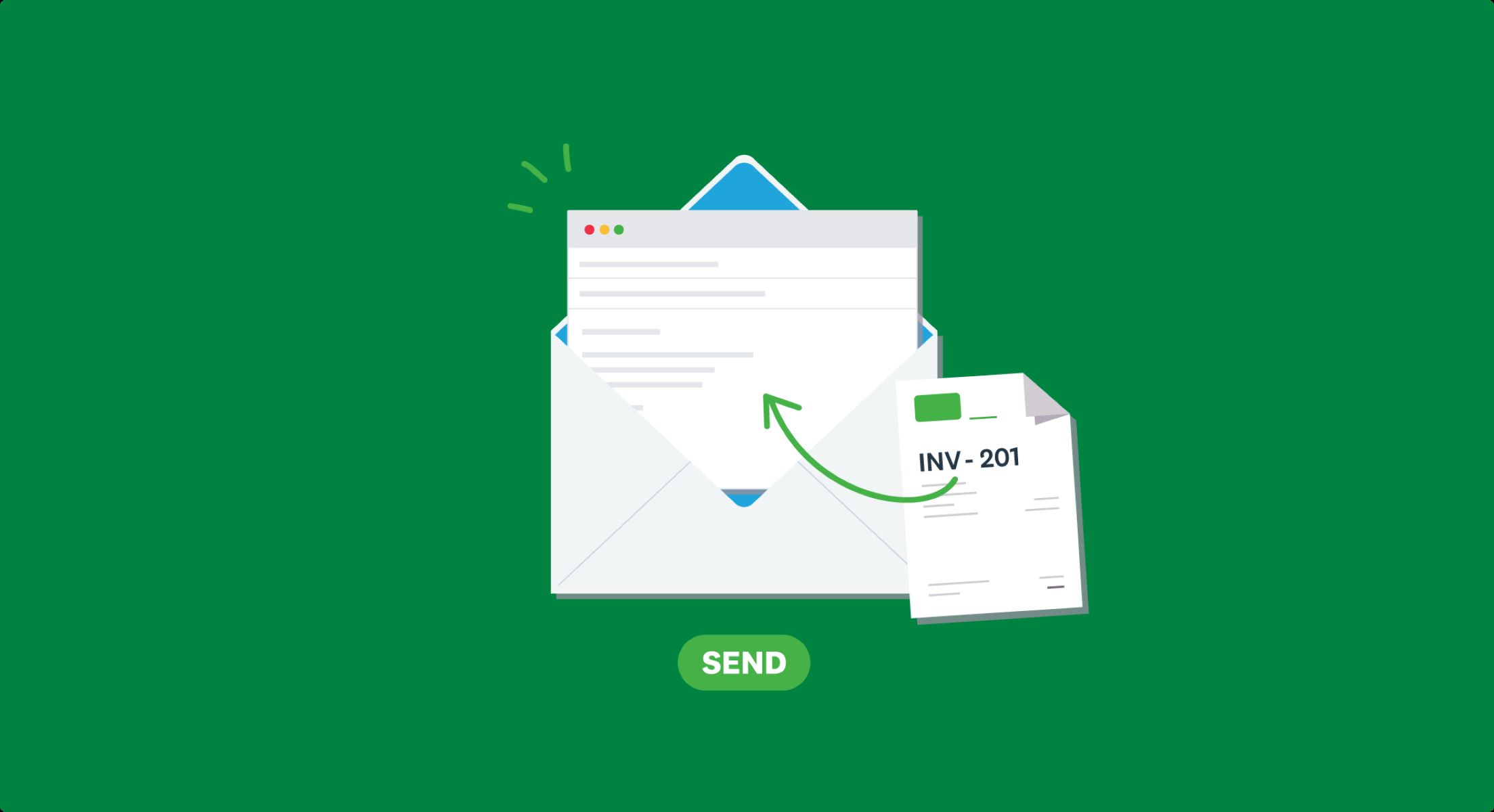Introduction
Welcome to the world of email communication! In today’s digital age, email is one of the most prevalent methods of professional communication. Whether you’re sending an email for business purposes or reaching out to someone for a personal matter, it’s crucial to know how to compose a proper email. Writing an email that is clear, concise, and professional not only makes a positive impression but also ensures effective communication.
In this article, we will guide you through the essentials of writing a proper email. From choosing a professional email address to structuring your email with a clear subject line, greeting, body, and closing, we will cover all the necessary steps to ensure your email stands out for all the right reasons.
Throughout the article, we will also touch upon the importance of etiquette, tone, and language in your emails. Additionally, we’ll address common formatting and grammar mistakes to steer clear of, ensuring your emails are polished and error-free.
Whether you’re a seasoned professional looking to improve your email writing skills or a newbie entering the world of online communication, this guide will provide you with valuable tips and tricks to elevate your email game. So, without further ado, let’s dive in and master the art of writing a proper email!
Choose a Professional Email Address
When it comes to email communication, the first impression starts with your email address. It’s important to choose a professional email address that reflects your identity and is suitable for professional interactions.
When creating an email address, consider using your first and last name or a combination of your name and profession. Avoid using nicknames, random numbers, or unprofessional words in your email address. A professional email address gives a sense of credibility and shows that you take your communication seriously.
Furthermore, it’s advisable to use a reliable email service provider for your professional emails. Popular email providers like Gmail, Outlook, and Yahoo offer professional email services that allow you to create a customized email address with your domain name. This adds an extra touch of professionalism to your email communication.
Remember, your email address is a representation of yourself or your business. It’s important to make sure it conveys a positive and professional image to the recipients of your emails. Take the time to choose a suitable and well-crafted email address that aligns with your professional goals and aspirations.
Use a Clear and Concise Subject Line
The subject line of an email is like a preview or a summary of the message you’re about to send. It is the first thing recipients see, and it plays a crucial role in grabbing their attention and indicating the purpose of your email. Therefore, it’s essential to craft a clear and concise subject line.
When writing a subject line, focus on capturing the main point or the subject of your email in a few precise words. Avoid using vague or generic subject lines that may confuse recipients or make them overlook your email. Instead, use keywords or phrases that summarize the purpose of your email effectively.
For example, if you’re requesting information from a colleague, a subject line like “Information Request: Project Update” will quickly convey your intention. If you’re responding to a job offer, a subject line such as “Job Application: [Position Title]” will clearly indicate the nature of your email.
Additionally, using action-oriented words or phrases in your subject line can create a sense of urgency or importance. For example, words like “Urgent,” “Important,” or “Action Required” can capture attention and encourage recipients to open your email within a timely manner.
It’s also important to avoid using all caps in your subject line as it can come across as shouting or unprofessional. Instead, capitalize the first letter of each word or use sentence case for a more visually appealing and reader-friendly subject line.
In summary, a clear and concise subject line will increase the chances of your email being opened and read. It sets the tone and expectation for the recipients and helps them understand the purpose of your email at a glance. By putting thought and effort into crafting an impactful subject line, you can enhance the effectiveness and professionalism of your email communication.
Greeting and Salutation
The greeting and salutation of your email are the first interactions you have with the recipient. It sets the tone for the rest of your email and establishes a professional and courteous starting point.
When addressing someone in an email, it’s important to use a proper salutation that reflects the level of formality and familiarity. If you’re writing to someone you have never met or have a formal relationship with, begin with a respectful salutation such as “Dear Mr./Ms./Dr. [Last Name].” This shows that you acknowledge their formal title and demonstrates professionalism.
If you’re writing to a colleague or someone you have an informal relationship with, it’s appropriate to use a friendlier greeting like “Hello [First Name]” or “Hi [First Name].” This can help create a more relaxed and approachable tone for your email.
In some cases, you may not have a specific recipient in mind or your email is being sent to a group of people. In this situation, you can use a general greeting such as “To Whom It May Concern” or “Dear Team.” However, it’s always better to address your email to a specific person whenever possible, as it adds a personal touch and shows that you take the time to address individuals directly.
Additionally, when addressing someone in your email, it’s important to use their correct title and spell their name correctly. Double-checking the spelling and title of the recipient ensures that your email is accurate and shows attention to detail.
Remember, the greeting and salutation set the tone for your email, so it’s essential to choose the appropriate level of formality and maintain a respectful and professional tone throughout your message.
Start with a Polite and Courteous Tone
When writing an email, it is crucial to start with a polite and courteous tone. This sets the foundation for a respectful and professional exchange of information.
Begin your email by expressing a genuine greeting and acknowledging the recipient. Use phrases such as “I hope this email finds you well” or “I trust you are doing well” to show consideration for the recipient’s well-being.
Next, express gratitude or acknowledgment towards the recipient for any previous communication, assistance, or collaboration. This helps to build rapport and shows appreciation for their time and efforts.
Using polite and courteous language throughout your email is also important. Avoid demanding or commanding sentences. Instead, use phrases like “Would you mind…” or “I kindly request…” to convey your needs or questions. Being polite and considerate in your language demonstrates respect for the recipient and promotes a positive and professional conversation.
Another aspect of maintaining a polite tone is avoiding confrontational or negative language. Even if you’re addressing a concern or disagreement, try to frame it in a constructive and diplomatic manner. Using phrases like “I have a concern I’d like to discuss” or “I would appreciate some clarification on this matter” helps foster open and productive communication.
Lastly, don’t forget to sign off your email with a polite closing. Use phrases like “Thank you for your attention” or “I look forward to your response” to conclude your message on a positive and courteous note.
Starting your email with a polite and courteous tone demonstrates professionalism and respect for the recipient. It sets the stage for a productive and collaborative conversation and promotes a positive working relationship.
Keep It Brief and to the Point
In today’s fast-paced world, time is valuable, and people have limited attention spans. Therefore, it’s essential to keep your emails concise and get straight to the point. Keeping your message brief not only respects the recipient’s time but also increases the chances of your email being read and understood.
Start by organizing your thoughts and identifying the main purpose of your email. Clearly state the reason for reaching out or the information you need to convey. Use short and focused sentences to express your ideas, and avoid unnecessary fluff or tangents that can distract from your main message.
If you have multiple points to address, consider using bullet points or numbered lists to break down the information and make it easier to read and comprehend. This helps to maintain clarity and ensures that important details are not overlooked.
When discussing complex or technical information, consider using concise and jargon-free language. Keep in mind that your email recipients may not have the same level of expertise in the subject matter, so it’s important to explain concepts clearly and concisely.
Avoid excessive repetition or redundancy in your email. Reiterate important information if necessary, but do so in a concise manner. Repetitive or redundant content can be time-consuming and may cause recipients to lose interest or misunderstand the main point of your email.
When concluding your email, summarize the key points or actions you expect from the recipient. This helps to ensure that your message is clear and that the recipient knows what steps to take next, if any.
Remember, keeping your emails brief and to the point not only demonstrates respect for the recipient’s time but also enhances your communication skills. By being concise, you can convey your message effectively and increase the likelihood of getting the desired response or action from your recipient.
Use Proper Grammar and Spelling
When it comes to email communication, using proper grammar and spelling is essential for conveying your message effectively and maintaining a professional image. A well-written email demonstrates attention to detail and shows that you take your communication seriously.
First and foremost, make sure to proofread your email before hitting the send button. Read through your message carefully to catch any spelling or grammatical errors. You can also use spelling and grammar checkers available in most email platforms to help identify and correct any mistakes.
Pay attention to the proper use of punctuation. Use commas, periods, and other punctuation marks correctly to ensure your sentences are clear and easy to understand. Avoid excessive or incorrect use of exclamation marks as they can come across as unprofessional or convey unnecessary urgency.
Furthermore, use proper capitalization throughout your email. Start sentences with a capital letter, capitalize proper nouns, and use uppercase letters in acronyms or abbreviations where necessary. Improper capitalization can make your email appear sloppy and can be a distraction for the reader.
Be mindful of subject-verb agreement and proper verb tenses. Ensure that your verbs match the subject of the sentence and maintain consistency in your verb usage throughout your email. Using the correct verb tenses also helps to ensure clear and concise communication.
Additionally, avoid using colloquialisms, slang, or text messaging abbreviations in your emails. Keep your language professional and clear. While it’s important to maintain a conversational tone, using overly casual or informal language can undermine the professionalism of your email.
Sometimes, it can be helpful to seek a second pair of eyes. Consider asking a trusted colleague or friend to review your email before sending it. They can provide valuable feedback and help identify any grammar or spelling mistakes you may have overlooked.
Overall, using proper grammar and spelling in your emails is essential for professional communication. It helps to ensure that your message is clear, concise, and easily understood by the recipient. Taking the time to proofread and double-check your email goes a long way in enhancing your credibility and professionalism.
Avoid Emoticons and Abbreviations
When it comes to professional email communication, it’s best to steer clear of emoticons and unnecessary abbreviations. While these elements may be common in casual conversations or texting, they can be perceived as unprofessional in a professional setting.
Emoticons, such as 🙂 or :D, are intended to convey emotions or add a personal touch to messages. However, in a professional email, they can be seen as informal or even childish. It’s best to rely on your words and tone to express your message and maintain a professional demeanor.
Similarly, excessive abbreviations or acronyms should be avoided in professional emails. While some commonly used abbreviations, like ASAP (as soon as possible) or FYI (for your information), are widely understood, using too many abbreviations can confuse the recipient or make your email appear rushed and informal.
If you must use an abbreviation, it’s a good practice to spell it out the first time you use it, followed by the abbreviation in parentheses. This ensures that everyone understands the meaning behind the abbreviation and avoids any confusion that may arise.
It’s important to remember that professional emails are meant to be formal and convey a sense of professionalism and respect. Using proper grammar, spelling out words, and avoiding unnecessary abbreviations or emoticons will help maintain the professional tone you strive for in your emails.
In some cases, there may be exceptions where the use of emoticons or abbreviations is acceptable. However, it is always best to exercise caution and consider the context and the recipient before including them in your email. If in doubt, it’s always better to err on the side of formality and professionalism.
By avoiding emoticons and abbreviations in your professional emails, you ensure that your communication is clear, concise, and maintains a professional tone. This will help you project a competent and reputable image to your recipients.
Be Mindful of your Tone and Language
When composing professional emails, it is crucial to be mindful of your tone and language. The tone and language you use can greatly impact how your message is received by the recipient and can influence the overall impression they have of you and your professionalism.
First and foremost, strive to maintain a polite and respectful tone throughout your email. Choose your words carefully, avoiding condescending or aggressive language that can be perceived as rude or unprofessional. Treat your recipient with dignity and professionalism, even if you are addressing a disagreement or expressing dissatisfaction.
It’s also important to be mindful of the level of formality in your language. Use language that is appropriate for the professional relationship you have with the recipient. For more formal relationships, use formal language and avoid overly casual or slang terms. For less formal relationships, adjust your language accordingly while still maintaining a professional tone.
While it’s essential to maintain a professional tone, it’s equally important to strike a balance by infusing a sense of empathy and friendliness into your email. It’s okay to show genuine warmth and understanding, as long as it is done in a professional manner. This helps to establish a positive and compassionate connection with the recipient.
When addressing sensitive or conflicting topics, take extra care with your language to ensure that you convey your message clearly and courteously. Use tactful and diplomatic language to navigate potentially challenging conversations while maintaining professionalism and respect.
It’s also important to pay attention to the tone of your email. Read your message aloud or imagine how it might sound to the recipient. Ensure it conveys the intended tone and does not come across as aggressive, dismissive, or insensitive.
Lastly, always proofread your email to check for any unintentional tonal errors or language that may be misconstrued. Read your email with a critical eye, imagining yourself as the recipient, to ensure that your message will be received as intended.
By being mindful of your tone and language, you ensure that your professional emails are effective, respectful, and leave a positive impression on the recipient. Clear and considerate communication contributes to building strong professional relationships and fosters a productive work environment.
Formatting and Structure
Proper formatting and structure play a significant role in creating professional and visually appealing emails. An organized and well-structured email not only improves readability but also enhances the overall impression of your message.
Here are some key considerations for formatting and structuring your professional emails:
Paragraphs: Divide your email content into paragraphs to make it easier for the reader to follow along. Each paragraph should focus on a specific point or topic to maintain clarity and coherence.
White Space: Use ample white space between paragraphs and sections to make your email visually appealing and less overwhelming. This helps to give your email a well-balanced and professional look.
Font and Font Size: Choose a professional-looking font, such as Arial, Calibri, or Times New Roman, and use a consistent font size throughout your email. A font size of 10 or 12 is generally considered standard for professional emails.
Headings: Use headings or subheadings to organize different sections of your email. This helps to break up the content and guide the reader’s attention to specific areas, improving readability and comprehension.
Bullets and Numbered Lists: Use bullets or numbered lists to present information in a clear and concise manner. This helps to highlight key points and makes it easier for the recipient to digest the information.
Important Details: If there are specific details or instructions that you want to draw attention to, consider using bold or italicized text. However, use these formatting options sparingly to avoid overwhelming the reader.
Attachments and Links: If you need to include attachments or links in your email, make sure they are easily accessible and clearly labeled. Mention any attachments or links in your email body and provide brief descriptions or instructions if necessary.
Signature: Always include a professional signature at the end of your email. Your signature should include your name, job title, company, contact information, and any relevant links, such as your professional website or LinkedIn profile. This provides a professional touch and makes it easy for the recipient to contact you if needed.
Remember that each email may vary in terms of structure and formatting requirements based on the purpose and recipient. However, maintaining consistency, clarity, and professionalism in your email formatting and structure is key to creating a positive and impactful impression.
Proper Use of Attachments and Links
Incorporating attachments and links in your professional emails can enhance the information you provide and deliver a more comprehensive message. However, it’s crucial to use attachments and links judiciously and ensure that they are used properly to maintain professionalism and optimize communication.
Attachments: When attaching files to your email, make sure they are relevant to the content and necessary for the recipient’s understanding or action. Be mindful of the file size to avoid overwhelming the recipient’s inbox and causing potential delivery issues. Consider compressing larger files or using cloud storage solutions if needed.
It’s good practice to provide a brief explanation or summary of the attachment in your email. This helps the recipient understand the purpose and relevance of the attachment without solely relying on the file itself. Additionally, check the file compatibility to ensure that the recipient can open and access the attachment without any difficulties.
Links: When using links in your email, it’s essential to make them clear and user-friendly. Use descriptive anchor text that accurately identifies the content the link leads to. For example, instead of using “Click here,” use a phrase like “Read the report on our website” to indicate what the recipient can expect when they click the link.
Double-check that the links you include are accurate and functional. Test them before sending the email to ensure they lead to the intended webpage or resource. Broken or incorrect links can create frustration and reduce the credibility of your email.
When including links, it’s helpful to provide context or a brief explanation of why the link is relevant or important. This helps the recipient understand the purpose of the link and encourages them to click on it, if necessary.
Avoid embedding extensive URLs directly into your email. Instead, use hyperlink formatting to make the link more visually appealing and user-friendly. Hyperlinked text can be clicked directly, making it easier for the recipient to access the linked content.
Remember to consider security and confidentiality when attaching files or using links in your email. If the information is sensitive or confidential, encrypt the file or use secure file-sharing platforms to ensure that only the intended recipient can access the content.
By using attachments and links properly, you can enhance the information you provide in your professional emails and facilitate the recipient’s understanding and action. Taking the time to ensure that attachments and links are relevant, clear, and accessible contributes to a more effective and professional email communication.
Closing and Signature
The closing and signature of your email are the final components that leave a lasting impression on the recipient. It’s important to choose an appropriate closing and provide a professional signature to wrap up your email effectively.
Closing: Choose a closing that is polite and professional. Common closings include “Sincerely,” “Kind regards,” or “Best regards.” These closings convey a sense of professionalism and respect. Avoid using overly informal closings like “Cheers” or “Take care” in a formal or professional setting.
If you have a personal or professional relationship with the recipient, you can consider using a slightly warmer closing like “Warm regards” or “Yours faithfully.” However, make sure the level of familiarity aligns with the existing relationship to maintain professionalism.
Signature: Including a professional email signature provides credibility and makes it easy for the recipient to reach out to you if they have any follow-up questions or need additional information.
Typically, an email signature should include your full name, your job title or position, the company you represent, and your contact information such as phone number and email address. If relevant, you can add links to your professional website, blog, or social media profiles such as LinkedIn.
Consider using a consistent and clean format for your email signature. Avoid using excessive images or fancy fonts that may distract from the content of your email. Instead, opt for a professional and easily readable format that aligns with your brand or company’s style guidelines.
If using a mobile device to send emails, make sure to disable any automatic signatures that may appear from your device’s settings. Utilizing a customized email signature helps maintain consistency across all your communications, regardless of the platform or device being used.
Double-check your signature: Before sending your email, review your signature for accuracy. Ensure that all contact details are up to date and that any links included in your signature are functioning correctly. A professional and error-free signature adds credibility and makes it easy for the recipient to get in touch with you.
By choosing an appropriate closing and providing a professional email signature, you leave a positive and lasting impression on the recipient. A well-executed closing and signature contribute to the overall professionalism and effectiveness of your email communication.
Proofread and Edit
Before sending any professional email, it is crucial to take the time to proofread and edit it. Proofreading helps to catch any grammatical errors, spelling mistakes, or formatting inconsistencies that may have been missed during the writing process.
Here are some key points to keep in mind when proofreading and editing your professional email:
Review for Clarity: Read through your email to ensure that your message is clear and easy to understand. Check for any ambiguous or confusing sentences, and rephrase them if necessary. It’s important to communicate your ideas concisely and effectively.
Check Grammar and Spelling: Look for any grammar or spelling errors in your email. Pay attention to subject-verb agreement, verb tenses, and proper sentence structure. Use spell-check tools to identify any spelling mistakes, but also manually review your email to catch errors that might not be picked up by automated tools.
Avoid Repetition: Scan your email for any unnecessary repetition or redundant phrases. Remove any redundant information or sentences that do not contribute to the overall message. Keep your email concise and focused on the main points you want to communicate.
Read it Aloud: Reading your email aloud can help identify awkward or unclear phrasing. If something sounds off or doesn’t flow smoothly, consider rewording or restructuring the sentence. This technique can also help catch any missing or misplaced words that may have been overlooked during the editing process.
Formatting and Consistency: Ensure that your email follows a consistent formatting style. Check for consistent font size, font type, and formatting of headings or bullet points. Consistent formatting makes your email look professional and polished.
Check Attachments and Links: If you have attached any files or included links in your email, verify that they are accurate and accessible. Test any links to ensure they lead to the intended destination. Also, double-check that any attachments are relevant and properly labeled.
Get a Second Opinion: Consider asking a trusted colleague or friend to review your email before sending it. They can provide fresh eyes to catch any mistakes or suggest improvements. Another person’s perspective can be valuable in ensuring your email is clear, professional, and error-free.
Proofreading and editing your email is an essential step to ensure a professional and error-free communication. Taking the time to review your email with a critical eye allows you to correct any mistakes, improve clarity, and present a polished message to your recipient.
Conclusion
Mastering the art of writing a proper email is essential in today’s professional world. By following the guidelines outlined in this article, you can ensure that your emails are clear, concise, and professional, leaving a positive impression on the recipients.
From choosing a professional email address to using a clear and concise subject line, every aspect of your email contributes to effective communication. The way you greet and address the recipient sets the tone for the entire message, while maintaining a polite and courteous tone throughout demonstrates professionalism and respect.
Keeping your emails brief and to the point ensures that your message is easily digestible by the recipients and increases your chances of getting the desired response or action. Additionally, using proper grammar and spelling enhances the clarity and professionalism of your emails, while avoiding the use of emoticons and unnecessary abbreviations maintains a polished image.
Formatting and structuring your emails effectively, using attachments and links judiciously, and providing a professional closing and signature are essential for a well-presented and visually appealing email. Finally, proofreading and editing your emails before sending ensures that you catch any errors or inconsistencies that may have been overlooked.
Remember, effective email communication is not only about the message you convey but also how you convey it. By consistently following these principles and adapting your language and tone to the recipient and the context, your emails will stand out as professional, clear, and respectful.
Take the time to craft each email thoughtfully, paying attention to every detail, as each email is an opportunity to build and maintain professional relationships, exchange information, and achieve your goals. With practice and attention to these guidelines, you’ll become a master of writing proper emails that deliver your message effectively and leave a lasting positive impression.











